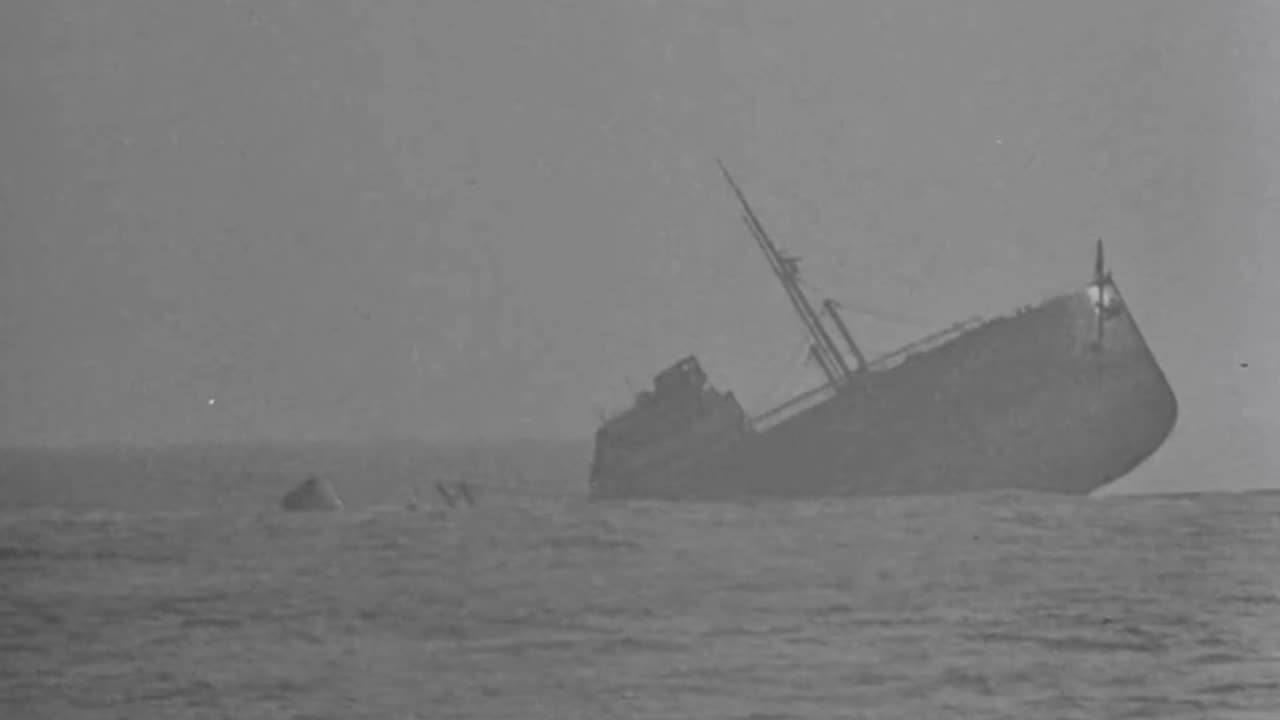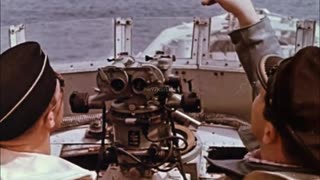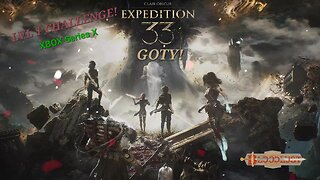Premium Only Content

Kriegsmarine Merchant Raider Kormoran in action in the Atlantic Ocean in early 1941
The German auxiliary cruiser Kormoran was a Kriegsmarine merchant raider that saw action during WWII. This footage documents some episodes from her first foray into the Atlantic tasked with disrupting Allied shipping directly and by laying mines as well as supplying other Kriegsmarine vessels. The audio is from an April 1990 interview with Hubert Hall, the 3rd Radio Officer on board SS Afric Star, one of the freighters sunk by Kormoran.
Originally the merchant vessel Steiermark, the ship was acquired by the Kriegsmarine following the outbreak of war for conversion into a raider. Administered under the designation Schiff 41, 'Ship 41', to the Allied navies she was known as "Raider G". The largest merchant raider operated by Germany during World War II, Kormoran was responsible for the destruction of ten merchant vessels and the capture of an eleventh during her year-long career in the Atlantic and Indian oceans.
The Hilfskreuzer is also notorious for sinking Australian light cruiser HMAS Sydney during a mutually destructive battle off Western Australia on November 19th 1941. While 318 of the 399 aboard the German ship were rescued and placed in prisoner of war camps for the remainder of the war, there were no survivors from the 645 aboard Sydney. The wreck of Kormoran was rediscovered on March 12th 2008, four days before that of her adversary.
0:05 On January 6th 1941 Kormoran encountered the 3,729-ton A.G.Lemos freighter Antonis that was carrying 4,800 tons of Welsh coal under British charter from Cardiff to Rosario in Uruguay. The vessel surrendered without a fight or distress signals being sent and was boarded, of note to firearm aficionados is a WWI-vintage MP 18 submachine gun in the hands of a member of the boarding party. After the crew were removed and supplies were taken the ship was sunk by demolition charges.
0:37 This is likely British Union caught sailing in ballast between Gibraltar and Curacao on January 18th 1941. This 6,897-ton British tanker exchanged fire with Kormoran and sent distress signals, but was abandoned on being set on fire and 28 members of her crew were picked up. Due to the warning being given to nearby Allied vessels, Kormoran had to leave the scene immediately, leaving 17 men adrift in life boats. Eight of these were later picked by HMAS Arawa, an Australian Armed Merchant Cruiser.
1:21 This likely Afric Star, a 11,900-ton British Blue Star Line refrigerator ship bound for the UK from Buenos Aires with a cargo of 5,790 tons of Argentine meat and 634 tons of butter, and was intercepted on January 29th 1941. This is the vessel on which interviewee Hubert Hall was sailing when he was captured. Attempts were made to sink her with demolition charges but she remained afloat and was finally dispatched with a torpedo, likely the explosion visible in the footage.
1:57 After evading pursuit, Kormoran made for a point off the Cape Verde Islands, where she rendezvoused with the supply ship Nordmark on 7 February. During a three-day replenishment operation, Kormoran topped up Nordmark's supply of spare U-boat parts with components brought from Germany, and transferred 170 of the 174 prisoners acquired so far.
Nordmark's companion vessel Herzogin is most likely the vessel visible in the footage. The twenty-year-old ship formerly named Duquesa was one of the first refrigerated ships in the world, and was renamed after being captured by heavy cruiser Admiral Scheer on December 18th 1940, while carrying a cargo of 9,000 tons of meat and fruit, including 3,500 tons of frozen meat, tinned meats and almost 15 million eggs.
Soon nicknamed "The Commissary Department Wilhelmshaven South", it had not been possible to send the coal-burning vessel back to Europe as a prize due to her shortage of fuel. What fuel she had remaining in her bunkers was being used exclusively to keep her refrigeration plant working as she supplied half the ships of the Kriegsmarine with prime Argentine beef and as many eggs as they could carry. Captain Theodor Detmers on Kormoran regretted not knowing about her when he sent 4,800 tons of premium Welsh coal to the bottom of the Atlantic with the Antonis.
Once everything flammable on board had been consumed by the furnaces Herzogin was to be scuttled, so her piano was retrieved by Kormoran's crew as seen in the footage. Apparently it also came with a warning from Captain Detmers that if the instrument caused any disruptions it would be pushed overboard.
-
 1:11
1:11
hw97karbine
4 days agoOriginal color footage featuring Kriegsmarine "Schnellboote" torpedo boats
111 -
 2:12
2:12
From Zero → Viral with AI
1 day ago🚀 AI Marketing Isn’t Just for Big Brands Anymore — Here’s Why
6.62K1 -
 9:51:58
9:51:58
Dr Disrespect
12 hours ago🔴LIVE - DR DISRESPECT - 10 WINS ON CONTROLLER - BO7 TOMORROW
285K19 -
 1:24:56
1:24:56
Glenn Greenwald
6 hours agoTrump Declares Cities as the Enemies Within; Reagan Appointed Judge Slams Trump Over Speech Crackdowns; American ER Doctor on Gaza Atrocities | SYSTEM UPDATE #524
110K86 -
 LIVE
LIVE
I_Came_With_Fire_Podcast
12 hours agoPete Hegseth and the Chamber of Standards | Digital IDs | Taiwan Chips & Salsa | CDL Crisis
300 watching -
 LIVE
LIVE
Adam Does Movies
11 hours ago $0.01 earnedTalking Movies + Ask Me Anything - LIVE
40 watching -
 29:11
29:11
Nick Shirley
4 hours ago $1.05 earnedPortland has Fallen... ANTIFA Take Control of City
13.5K23 -
 1:19:00
1:19:00
VapinGamers
3 hours ago $0.21 earnedJump Space - We All Scream in Space - Early Access - !rumbot !music
13.7K1 -
 1:50:12
1:50:12
Joker Effect
3 hours ago(Kick) Streamers Have Ruined The Streaming Landscape and Here is How! Reviewing Phase Partners...
21.1K1 -
 3:46:40
3:46:40
The Blood Lust Gaming
5 hours agoClair Obscur: Expedition 33 - LVL 1 challenge run pt.3
11K